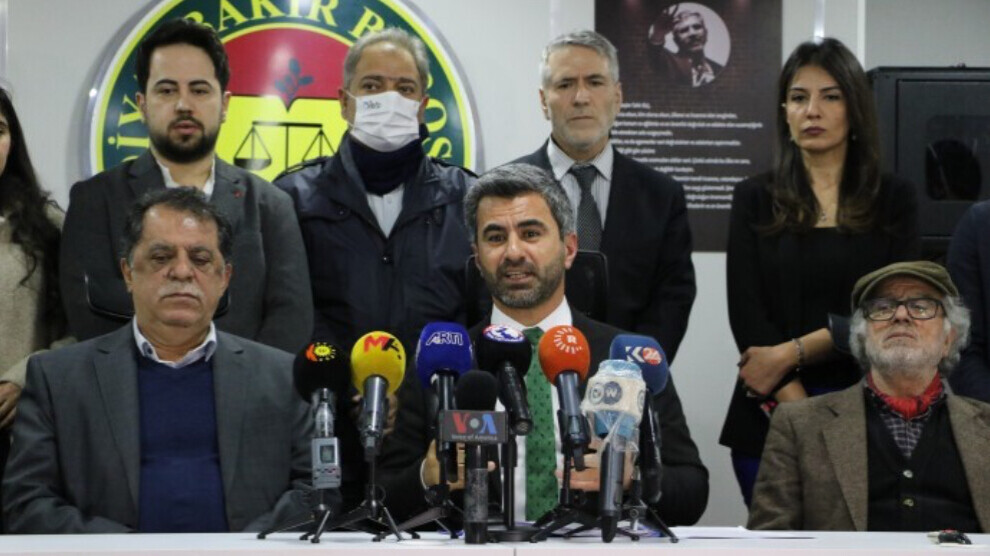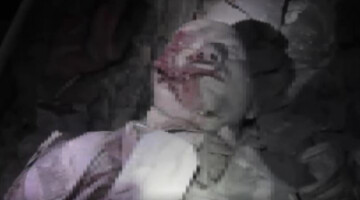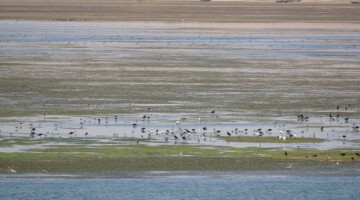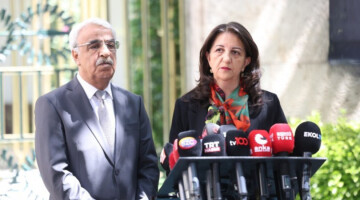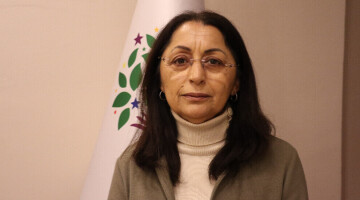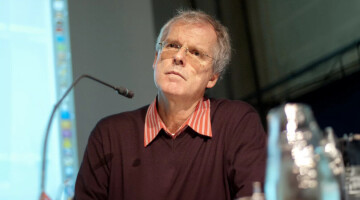The Sheikh Said and his Companions Association and the Amed Bar Association issued a statement at the Tahir Elçi Conference Hall addressing the administrative application to the Turkish Ministry of Interior for the disclosure of Sheikh Said and his companions’ burial places.
President of the Amed Bar Association Nahit Eren said that "We are of the opinion that the persecution inflicted on the Kurds with death sentences and the following denial of their remains continues. In this sense, political actors make statements about reconciling with the past on occasion. Since you are confronting the past, one of the first things that must be confronted is the cruel attitude against Kurds that has been maintained in this country for a century. The case of Sheikh Said and his companions is one of them. We demand that the burial sites be made public, not only for the sake of their families, but also for the benefit of all Kurds."
Eren said the following about the application:
"Of course, this is a legal and administrative application. Since the conditions of 1925, there have been considerable changes in administrative processes in Turkey. However, based on the legal evaluations we conducted today, our interlocutor is the Ministry of Interior. We have no doubt that an executed person will be buried in a location that the state is responsible for and that the state is aware of. Because the bodies in question were not handed to relatives and the location where they were buried was somehow kept hidden."
Eren added, "If this information is not disclosed to us, we will file a lawsuit."
'OUR PEOPLE MUST EMBRACE THIS CAUSE'
Mehmet Kasım Fırat, Chairman of the Sheikh Said and Companions Association, said that they wanted the remains 96 years ago, but they have not been delivered yet. Fırat declared that they had not received a response to their application and added, "Representatives of the Republic should listen to this voice, and all our people should embrace our cause."
BACKGROUND
97 years ago, Şêx Seîdê Pîran and 47 companions who led an uprising against the violent policies of the Turkish Republic were publicly hanged. Their burial place is kept secret until today.
The rebellion started under the leadership of the Kurdish-Sunni clergyman Şêx Seîdê Pîran (Sheikh Said) on 13 February 1925 in the village of Pîran in Eğil district of Amed (Diyarbakir) paved the way for numerous Kurdish rebellions after the end of World War I, which followed the process of the Turkish nation-state formation after the fall of the Ottoman Empire and were directed against the denial of the Kurdish existence, the entry of political autonomy and the fascist policy of Turkification. Besides Amed, the uprising also included the regions of Elazığ and Bingöl, and in the further course, the uprising expanded to almost the entire area populated by Kurds in present-day Turkey.

A few weeks later, on 26 March 1925, Turkish military units began air and ground attacks on suspected retreat sites of Kurdish insurgents, after 25,000 soldiers had initially been transferred to the region. At the beginning of April, the number of troops reached about 52,000 men: the insurgency was crushed in blood. At least 15,000 people were killed. At the end of April, Şêx Seîd and a large number of his comrades-in-arms were captured in Muş. A brother-in-law of the cleric who had served as an officer in the Ottoman Empire had betrayed them. After their transfer to Amed, Şêx Seîd and 47 of his companions were sentenced to death on June 28, 1925. The public execution followed one day later. Their burial place is kept secret until today.

Şêx Seîd and his companions were executed, but the Ararat uprisings began the following May. At that time, however, the Turkish government had already established its systematic approach to the Kurdish resistance with its "Reform Plan for the East" (Şark Islahat Planı). Under the cloak of a state of emergency, this plan provided for assimilation measures, including deportations, resettlements and mass murders. With this plan, the Kurdish question was subordinated to the military, which is still noticeable in the near present. What we call the Kurdish question today was created during those years.


